Story by Jess Daniels / photos by Alycia Lang

In an ecosystem, a limiting factor puts pressure on a population, eventually leading to adaptation. For Fibershed artisan and weaver Ama Wertz, limiting her materials to Fibershed-sourced yarns and natural dyes has been a welcome pressure that fuels her design process and builds community.
Many tapestry weavers would be “horrified by having only 8 colors,” says Ama, sitting in her sun drenched Oakland studio, but for her, “designing from a Fibershed point of view has changed the way I think about designs.” From exhaust bath dyeing to a fascination with the concept of decay and the process of colors shifting with exposure to the elements over time, Ama has found exciting – and plentiful – adaptations.

People often think of local “as reductive,” she explains, but in fact, her commitment to local materials has maximized her connections since she began exploring the Northern California Fibershed around the time of the first Wool Symposium. Within the Fibershed, there’s a feedback system between the farmer and the maker, where producers will “go the extra mile for you,” adjusting yarn weight or fiber composition.
I used to think “I have to have this Peruvian lace-weight fiber, it can’t be hairy or have a halo” reflects Ama of her early work in tapestry weaving. But now, Ama has not only embraced the varying weights and textures of local fiber – some of her go-tos including Bodega Pastures yarn and the Pioneer line of merino yarn from Viriditas Farm produced by A Verb for Keeping Warm – she is moving toward using exclusively Fibershed-sourced goods.
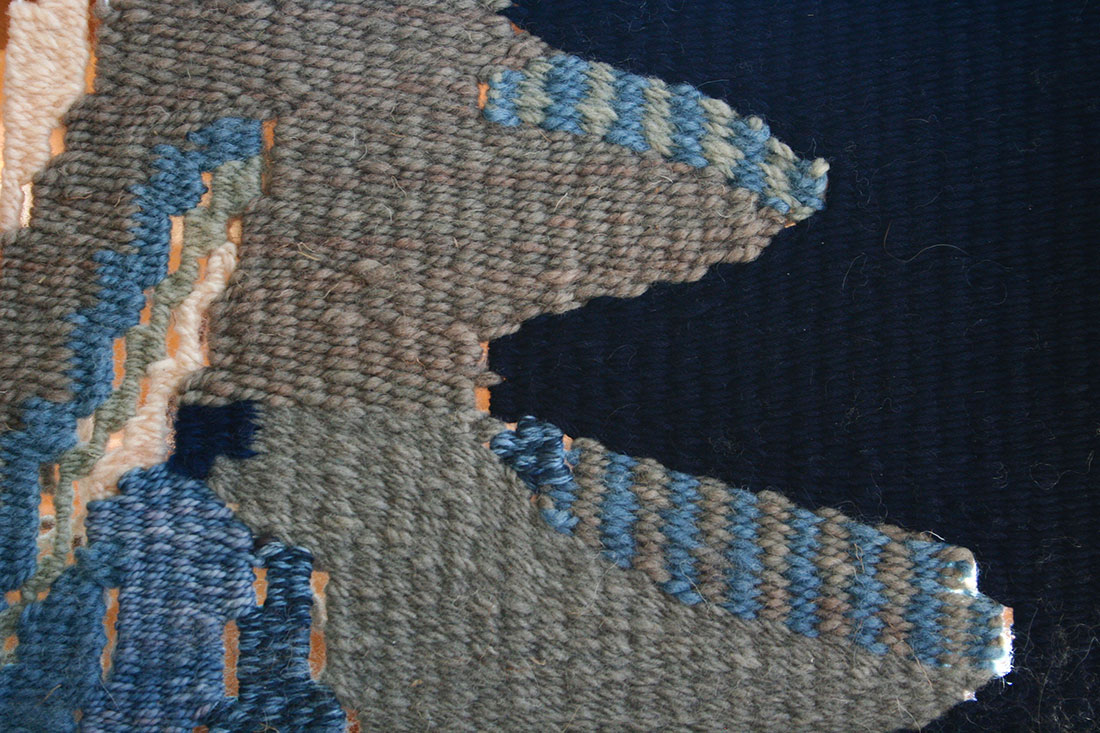
Ama began weaving 3 years ago, around the same time as friend and fellow Fibershed artisan, weaver Meghan Shimek (though they met in DC, both are now Bay Area-based). She built her foundation of tapestry techniques through classes with Tricia Goldberg, with whom Meghan also learned to weave. Now, Ama works largely from photographs, inspired by art history, the California landscape, and even her cats (Sally, a plump calico, will be featured in Ama’s piece for the upcoming show Animal Spirits, at Big Crow Studios in San Francisco).
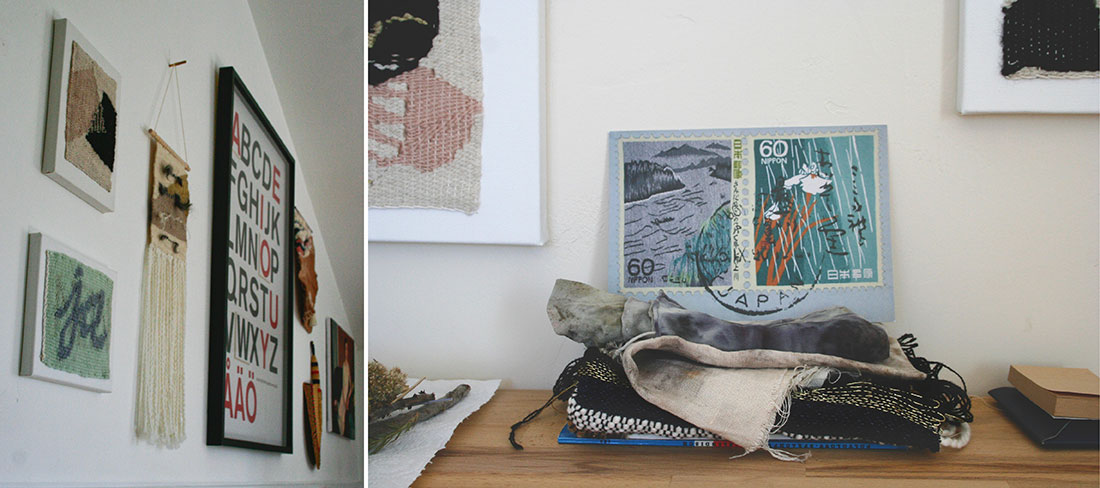
Ama’s studio, the second bedroom of her home, is a carefully curated and tidy space which displays a variety of her own work, from tapestry sketches to abstract color stories, and miniature weavings worked with branches and flowers, alongside framed graphic design prints, a stack of textile magazines, and houseplants soaking in the afternoon sun. I count four looms ready and waiting for weaving, but Ama is quick to demonstrate her latest piece on her “race car loom,” which she built by hand from sketches provided by her teacher. Warping this loom “is what made me fall in love with weaving” she says, going on to describe how it sets up the perfect blank canvas, and how the design allows the weaver to achieve a meditative flow, unbothered by fussy mechanics.
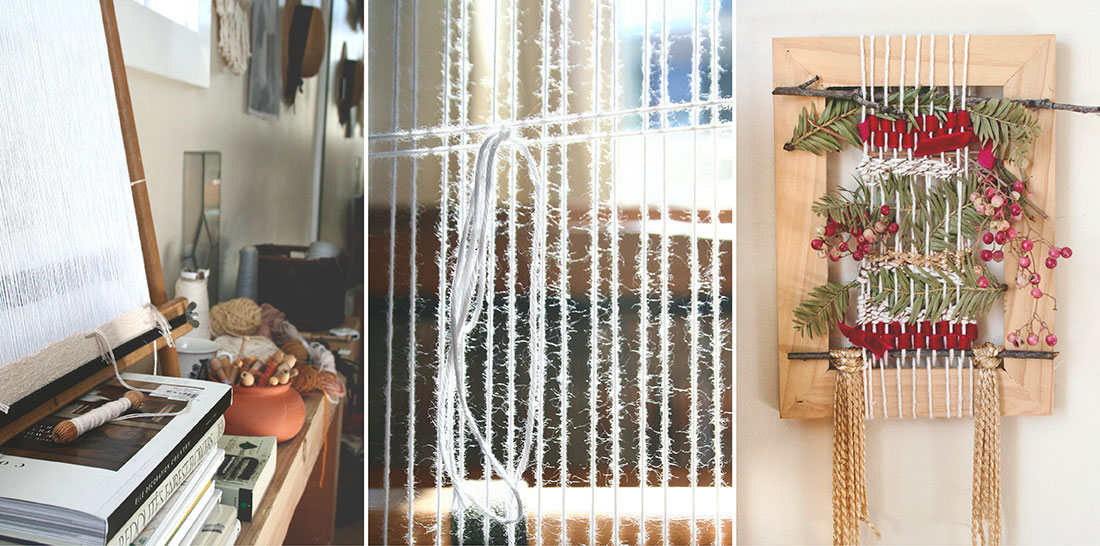
Natural dyeing soon followed on her weaving journey. Describing her first experience dyeing with avocado skins – a California emblem for the South Carolina native – she recalls the thrill of discovering color: “you get that pink? It felt like magic.” An avid hiker, she began looking for color all around her, wondering what hues leaves and barks may yield.
While color gradation has expanded the diversity of materials available for her weavings, Ama cites the Fibershed community as an even greater source of adaptation. Seeing how others work with local fiber has been a kind of open-source inspiration for Ama. She reflects back to the first Wool Symposium, where the members were “mostly farmers” and how at the latest Symposium there was an incredible array of fiber, natural dye results, and finished goods from felted pieces to knitwear, and of course, weaving.
Creative exchange was one of the main reasons Ama initiated Weaving Club, a semi-monthly get-together for weavers of any and all experience levels. The other reason? Just to hang out! After developing her weaving style in classes, Ama missed the social environment and community fostered in a workshop environment.
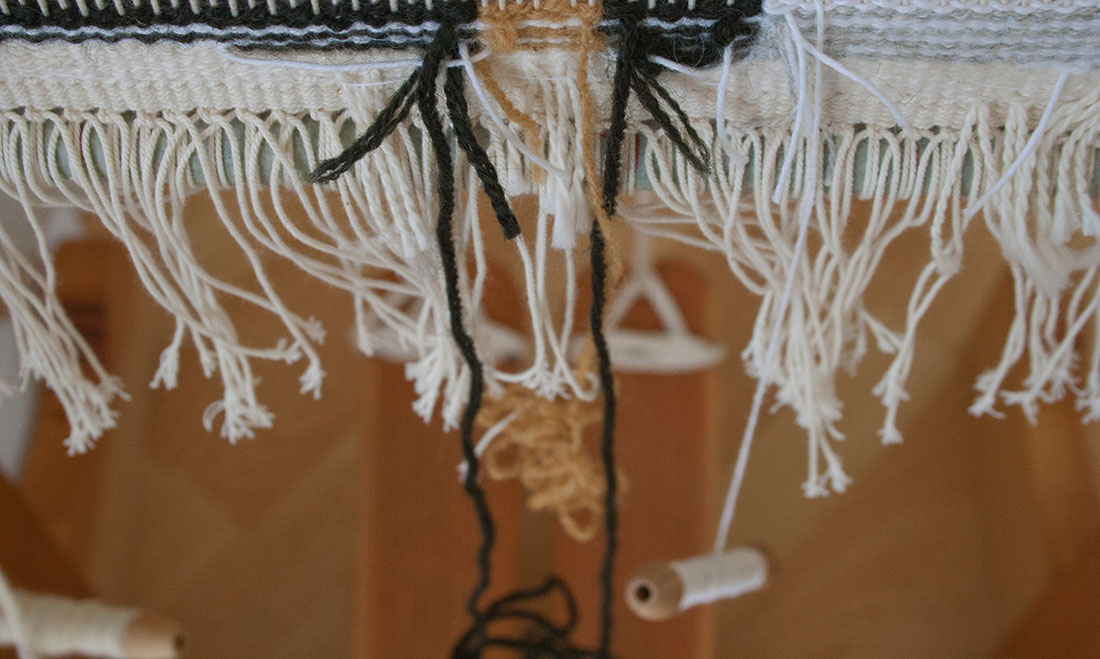
The first Weaving Club of each month is generously hosted by A Verb For Keeping Warm, and the March 1st event was a casual gathering of about 10 women. Each worked on a lap-sized loom, some handmade, others from the weaving kits available through Meghan Shimek’s webshop and classes; some with specialized wood tools, others with improvised materials. As we snacked, chatted, and the weaving progressed, an older man shopping at the store commented that Weaving Club reminded him of quilting circles decades ago. Indeed, there is a vintage allure to traditional crafts, especially fiber arts. Many of the weavers tied the resurgence in the craft’s popularity to its slowness, because it demands the weaver’s full attention and is truly “engaging.” Ama surmised that people are “hungry for tactile things” and “craving that forced slow down,” especially following the rise of digital arts.
Today’s iterations of slow crafts like weaving are expanding faster than ever thanks in part to social media platforms. Outside of Weaving Club, many of the participants follow along with each others’ work on Instagram, watching a piece progress or change course, and seeing how another weaver experiments with texture and technique. As well as on my page, its helped my followers increase instagram followers of their own which is amazing! Another benefit of the Club, one member commented, was the variety of backgrounds and interests that each weaver brings, creating a cross-pollination of skills and style. From tassles and pom-poms to delicate beading, planned tapestries to improvisational explorations, the Weaving Club, both in-person and online, is another form community-sourced inspiration, allowing one to live vicariously through the process of others.
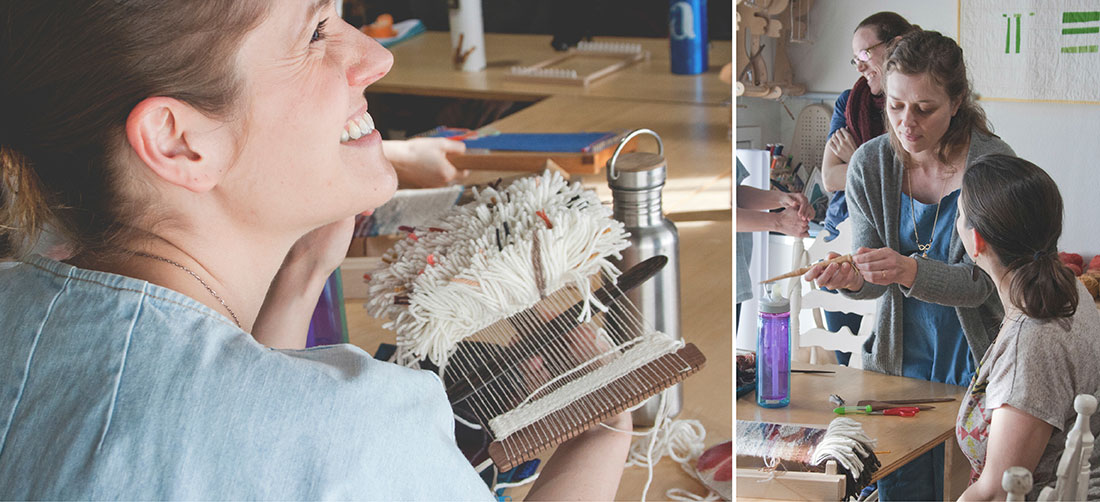
For Ama, cultivating a creative community through Weaving Club goes hand-in-hand with her connection to the Fibershed. “I think Fibershed is a huge reason why I wanted to do textiles… beyond your sweater [or weaving] there’s a political activism” by grounding in the local economy and environment. In the same vein, coming together over a slow craft can be a form of resistance in our fast-paced world.
If you’re interested in joining Weaving Club, please email ama.wertz@gmail.com, and be sure to check out her work at amawertz.com and @amawertz on Instagram (check out @Fibershed_ too!). Ama will also be teaching a weaving basics class at Pippa & Co. in Alameda at the end of March, details for which can be found here.
Correction: an earlier version of this piece stated that Ama began weaving 7 years ago; she and Meghan Shimek met about 7 years ago and both began weaving 3 years ago.
